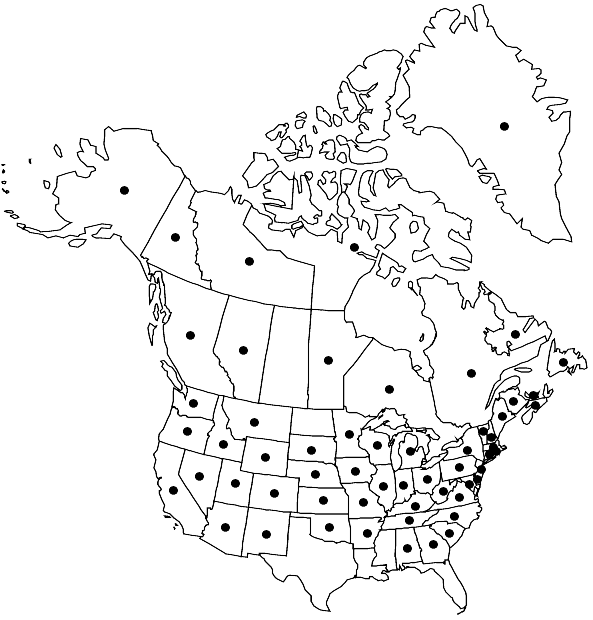Difference between revisions of "Polytrichum juniperinum"
Sp. Musc. Frond., 89, plate 18, figs. 6–10. 1801,.
FNA>Volume Importer |
imported>Volume Importer |
||
| (6 intermediate revisions by 2 users not shown) | |||
| Line 10: | Line 10: | ||
|name=Polytrichum alpestre | |name=Polytrichum alpestre | ||
|authority=Hoppe | |authority=Hoppe | ||
| − | }}{{Treatment/ID/Synonym | + | |rank=species |
| + | }} {{Treatment/ID/Synonym | ||
|name=Polytrichum juniperinum var. alpestre | |name=Polytrichum juniperinum var. alpestre | ||
|authority=(Hoppe) Röhling | |authority=(Hoppe) Röhling | ||
| − | }}{{Treatment/ID/Synonym | + | |rank=variety |
| + | }} {{Treatment/ID/Synonym | ||
|name=Polytrichum juniperinum var. waghornei | |name=Polytrichum juniperinum var. waghornei | ||
|authority=Kindberg | |authority=Kindberg | ||
| + | |rank=variety | ||
}} | }} | ||
|hierarchy=Polytrichaceae;Polytrichum;Polytrichum juniperinum | |hierarchy=Polytrichaceae;Polytrichum;Polytrichum juniperinum | ||
| Line 30: | Line 33: | ||
|elevation=low to high elevations | |elevation=low to high elevations | ||
|distribution=Greenland;Alta.;B.C.;Man.;N.B.;Nfld. and Labr.;N.W.T.;N.S.;Nunavut;Ont.;P.E.I.;Que.;Yukon;Ala.;Alaska;Ariz.;Ark.;Calif.;Colo.;Conn.;Del.;Ga.;Idaho;Ill.;Ind.;Iowa;Kans.;Ky.;Maine;Md.;Mass.;Mich.;Minn.;Mo.;Mont.;Nebr.;Nev.;N.H.;N.J.;N.Mex.;N.Y.;N.C.;Ohio;Okla.;Oreg.;Pa.;R.I.;S.C.;S.Dak.;Tenn.;Utah;Vt.;Va.;Wash.;W.Va.;Wis.;Wyo.;Mexico;West Indies;Central America;s South America;Europe;n;c Asia;Atlantic Islands (Macaronesia);Pacific Islands (New Zealand);Australia;Antarctica. | |distribution=Greenland;Alta.;B.C.;Man.;N.B.;Nfld. and Labr.;N.W.T.;N.S.;Nunavut;Ont.;P.E.I.;Que.;Yukon;Ala.;Alaska;Ariz.;Ark.;Calif.;Colo.;Conn.;Del.;Ga.;Idaho;Ill.;Ind.;Iowa;Kans.;Ky.;Maine;Md.;Mass.;Mich.;Minn.;Mo.;Mont.;Nebr.;Nev.;N.H.;N.J.;N.Mex.;N.Y.;N.C.;Ohio;Okla.;Oreg.;Pa.;R.I.;S.C.;S.Dak.;Tenn.;Utah;Vt.;Va.;Wash.;W.Va.;Wis.;Wyo.;Mexico;West Indies;Central America;s South America;Europe;n;c Asia;Atlantic Islands (Macaronesia);Pacific Islands (New Zealand);Australia;Antarctica. | ||
| − | |discussion=<p>Polytrichum juniperinum occurs on a variety of substrates, but primarily in dryer situations than P. commune or P. strictum. It often forms extensive pure stands of a distinctive pale bluish green color from the reflection of light off the thin, membranous margins of the leaves. The narrow leaf blades are widely spreading and have short, reddish awns. Polytrichum juniperinum is common and generally distributed throughout continental North America. In the high Arctic, however, the species is rare and many older reports of it actually pertain to 5. P. hyperboreum (D. G. Long 1985).</p> | + | |discussion=<p><i>Polytrichum juniperinum</i> occurs on a variety of substrates, but primarily in dryer situations than <i>P. commune</i> or <i>P. strictum</i>. It often forms extensive pure stands of a distinctive pale bluish green color from the reflection of light off the thin, membranous margins of the leaves. The narrow leaf blades are widely spreading and have short, reddish awns. <i>Polytrichum juniperinum</i> is common and generally distributed throughout continental North America. In the high Arctic, however, the species is rare and many older reports of it actually pertain to 5. <i>P. hyperboreum</i> (D. G. Long 1985).</p> |
|tables= | |tables= | ||
|references= | |references= | ||
| Line 39: | Line 42: | ||
-->{{#Taxon: | -->{{#Taxon: | ||
name=Polytrichum juniperinum | name=Polytrichum juniperinum | ||
| − | |||
|authority=Hedwig | |authority=Hedwig | ||
|rank=species | |rank=species | ||
| Line 53: | Line 55: | ||
|publication year= | |publication year= | ||
|special status= | |special status= | ||
| − | |source xml=https:// | + | |source xml=https://bitbucket.org/aafc-mbb/fna-data-curation/src/2e0870ddd59836b60bcf96646a41e87ea5a5943a/coarse_grained_fna_xml/V27/V27_169.xml |
|genus=Polytrichum | |genus=Polytrichum | ||
|species=Polytrichum juniperinum | |species=Polytrichum juniperinum | ||
Latest revision as of 21:24, 5 November 2020
Plants small to medium to fairly robust, gray-green to bluish green to reddish brown with age, in loose tufts, often forming extensive patches. Stems (1–)4–5(–10) cm, simple, brownish tomentose only near the base. Leaves 3–6(–8) mm, densely imbricate, ± erect and almost straight when dry, erect-spreading to widely spreading when moist; sheath oblong-rectangular, yellowish, tapering to the blade; blade slender, bluish green and nitid, rather flat, with sharply infolded margins; marginal lamina 5–7 cells wide, 1-stratose, entire or minutely crenulate, membranous and transparent, enclosing the lamellae and overlapping towards the apex; costa usually somewhat toothed distally, excurrent, forming a subulate, toothed awn, the awn reddish brown throughout or slightly decolorate at tip; lamellae bluntly crenate in profile, 6–8 cells high, the marginal cells in cross-section ovate to pyriform, thick-walled, ending in a distinct knob, smooth or rarely faintly papillose, the marginal cells of lateral lamellae (enclosed by the overlapping margins) ovoid and less strongly thickened; sheath cells 70–100 × 6–10 µm, narrowly rectangular (4–6:1), narrower toward the margin; cells of the broad marginal lamina transversely elongate, very thick-walled. Sexual condition dioicous; perigonial rosettes yellowish to reddish green; perichaetial leaves longer than the foliage leaves, long-sheathing, the blade almost obsolete, ending in a slender yellowish or hyaline awn. Seta (1–)3–5 cm, stout, yellowish to reddish brown. Capsule 2.5–5 mm, rectangular, longer than wide (1.5–2:1), reddish brown to dark brown, glaucous when fresh, suberect, becoming horizontal when mature, sharply 4-angled and prismatic; peristome 200–240 µm, divided to 0.6–0.8, the teeth 64, keeled at back. Calyptra whitish to light brown, covering the capsule. Spores 6–10(–12) µm.
Habitat: Exposed, well-drained, mostly acid soils in old fields and open woods, in openings following forest fire, on trailside banks and road cuts, on thin shallow soil overlying rocks, blowdowns and open ridge tops near timberline, only rarely in moist or wet situations
Elevation: low to high elevations
Distribution

Greenland, Alta., B.C., Man., N.B., Nfld. and Labr., N.W.T., N.S., Nunavut, Ont., P.E.I., Que., Yukon, Ala., Alaska, Ariz., Ark., Calif., Colo., Conn., Del., Ga., Idaho, Ill., Ind., Iowa, Kans., Ky., Maine, Md., Mass., Mich., Minn., Mo., Mont., Nebr., Nev., N.H., N.J., N.Mex., N.Y., N.C., Ohio, Okla., Oreg., Pa., R.I., S.C., S.Dak., Tenn., Utah, Vt., Va., Wash., W.Va., Wis., Wyo., Mexico, West Indies, Central America, s South America, Europe, n, c Asia, Atlantic Islands (Macaronesia), Pacific Islands (New Zealand), Australia, Antarctica.
Discussion
Polytrichum juniperinum occurs on a variety of substrates, but primarily in dryer situations than P. commune or P. strictum. It often forms extensive pure stands of a distinctive pale bluish green color from the reflection of light off the thin, membranous margins of the leaves. The narrow leaf blades are widely spreading and have short, reddish awns. Polytrichum juniperinum is common and generally distributed throughout continental North America. In the high Arctic, however, the species is rare and many older reports of it actually pertain to 5. P. hyperboreum (D. G. Long 1985).
Selected References
None.